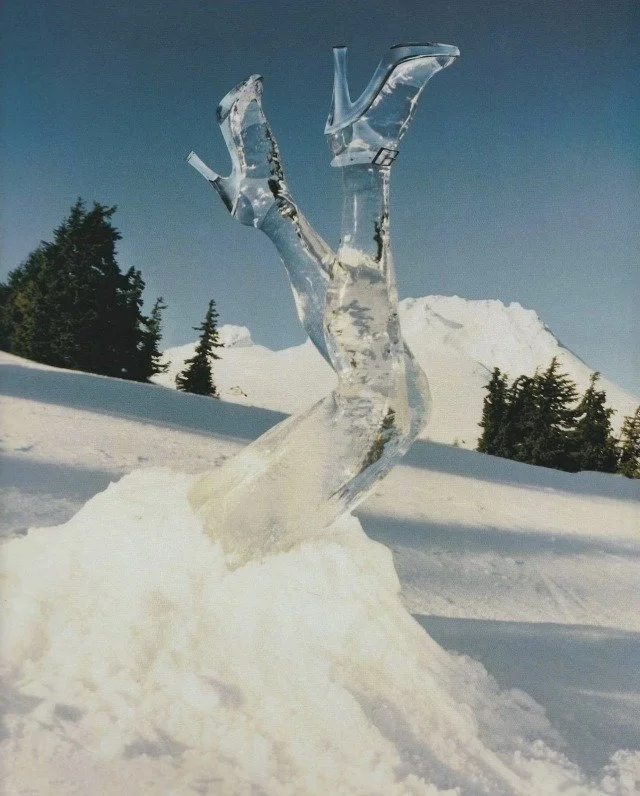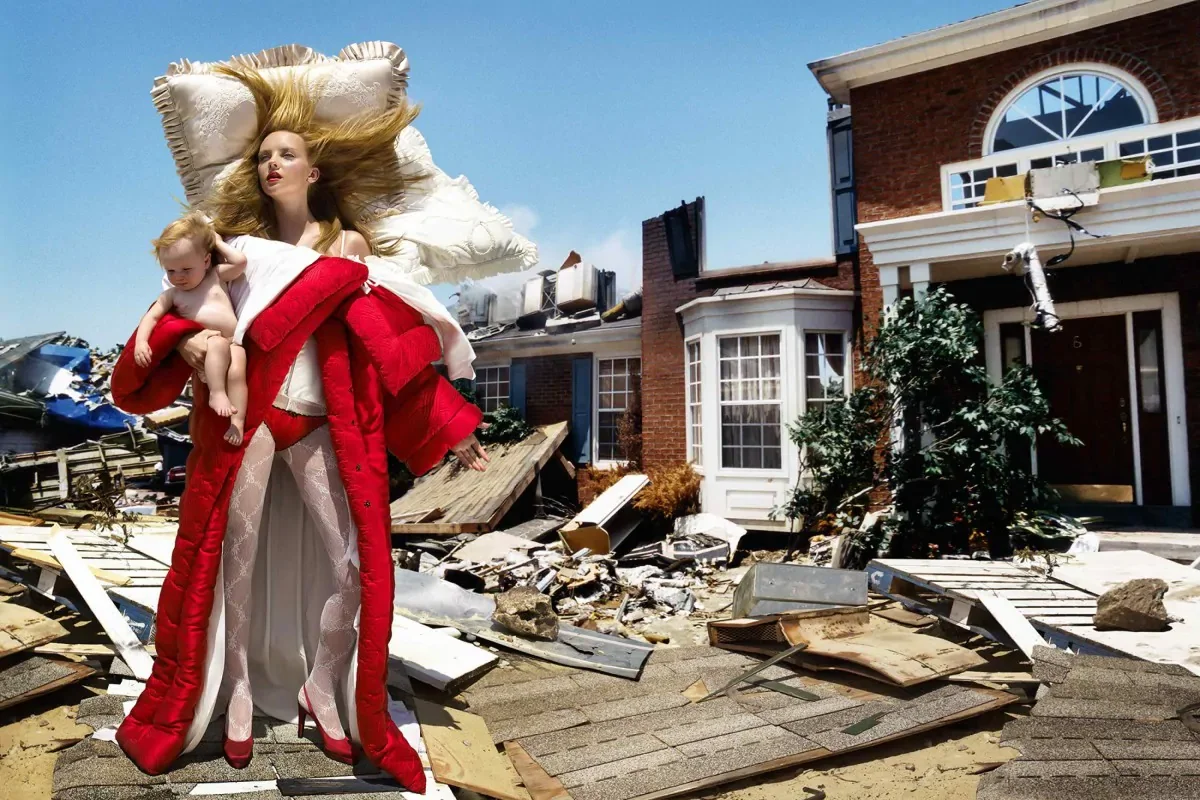Inside the Surreal World of David LaChapelle: Pop Culture, Surrealism & Iconic Photography
By Alexus Mosley
A Dollhouse Disaster starring Ewan McGregor and Cameron Diaz photographed by David LaChapelle for The Face (October 1997)
When you think of fashion photography that is unapologetically theatrical, saturated in color, and drenched in cultural commentary, one name rises above the rest: Dave LaChapelle. A provocateur, visionary, and storyteller, LaChapelle has spent over three decades pushing the limits of how fashion and celebrity are captured, blending glamour with grotesque, beauty with absurdity, and fantasy with critique.
Born in Hartford, Connecticut, LaChapelle came of age in New York City during its most electric cultural moment. As a teenager, he found himself immersed in the energy of Studio 54, mingling with Warhol-era icons who encouraged his early photographic experiments. Andy Warhol himself offered LaChapelle his first major opportunity at Interview Magazine—an initiation into a world where art, fashion, and celebrity were in constant collision.
Unlike his peers who leaned toward minimalism or documentary realism, LaChapelle gravitated toward the surreal. He was fascinated by Renaissance painting, Catholic iconography, and pop culture in equal measure. These eclectic influences would soon become the DNA of his signature style.
Breakthroughs in Fashion & Celebrity
By the 1990s, LaChapelle was everywhere. His bold, glossy, hyper-saturated images defined the pages of Vanity Fair, Vogue Italia, Rolling Stone, and i-D. His subjects were just as iconic as his visual approach: Madonna, Tupac Shakur, Britney Spears, Lady Gaga, Naomi Campbell, and countless others found themselves reimagined through his lens.
But what made his work stand out wasn’t just celebrity. It was the way he re-staged fame itself. LaChapelle’s shoots were part editorial, part cinema, part hallucination. He could transform a pop star into a religious martyr, a supermodel into a plastic doll, or a rapper into a classical Greek figure. His camera didn’t just document, but it provoked.
Naomi Campbell photographed by David LaChapelle for Playboy (December 1999)
Chanel on Ice photographed by David LaChapelle for Vogue Paris (April 1997)
LaChapelle’s photography exists in the space between the sacred and the profane. On one hand, his sets are lush with velvet, neon, and glitter, all the visual excess that celebrates glamour. On the other hand, they often hold a mirror to consumerism, decay, and spiritual emptiness.
Series like “Heaven to Hell” and “Awake at the Apocalypse” take his fashion sensibility to a grander, darker scale, transforming models into fallen angels, saints, and sinners in narratives that feel part fashion editorial, part biblical allegory. In these works, beauty is never just beauty, but a commentary on desire, vanity, and mortality.
Few photographers understood celebrity as performance better than LaChapelle. His famous image of Kanye West as a modern-day Jesus, or Lil’ Kim painted head-to-toe in designer logos, weren’t just editorial flourishes—they were biting critiques of pop culture’s obsession with branding and divinity.
He once said, “I want to communicate with people without them having to read a book.” His work uses familiar faces to make audiences confront deeper ideas: What does fame cost? Where does desire lead? When does beauty become grotesque?
In the mid-2000s, at the height of his commercial success, LaChapelle shocked the industry by stepping away from the fashion world. Retreating to a farm in Maui, he began to focus on fine art photography, staging elaborate gallery exhibitions that fused his pop sensibility with philosophical themes.
Collections like Earth Laughs in Flowers and Gas Stations depicted consumer society’s collapse against lush natural backdrops—commentary on climate change, capitalism, and the fragility of human ambition. While still dazzling, these works felt more meditative, signaling LaChapelle’s evolution from celebrity chronicler to cultural prophet.
Whitney Houston photographed by David LaChapelle for Whitney: Greatest Hits (2000)
The World According to LaChapelle
LaChapelle’s influence is everywhere: in today’s maximalist campaigns, in the visual DNA of music videos, and in the heightened aesthetics of Instagram culture. Before social media turned everyone into their own art director, LaChapelle was already creating images where identity, performance, and spectacle collided.
He is often compared to photographers like Helmut Newton or Guy Bourdin, but his work exists in its own universe—closer to Fellini or Salvador Dalí than to traditional fashion editors. He expanded what fashion photography could be: not just a showcase of clothes, but a stage for cultural theater.
At its core, Dave LaChapelle’s world is one of contradictions: playful yet political, beautiful yet grotesque, commercial yet critical. His work asks us to look twice—not just at the celebrity in front of the lens, but at the systems of fame, desire, and capitalism that create them.
And perhaps that’s why his photography remains timeless. Fashion moves quickly, but LaChapelle’s images freeze moments that feel eternal: Britney as a living doll, Naomi as a goddess, Michael Jackson as an angel ascending. These are not just portraits, but mythologies of our time.
The House at The End of The World photographed by David LaChapelle for Vogue Italia (October 2005)
Inside Dave LaChapelle’s surreal, sparkling, sometimes shocking world, fashion is never just fashion. It’s theater, spirituality, critique, and fantasy rolled into one. For The Styled Chat, this is what makes him essential: a reminder that style isn’t just about surface, but about the stories and symbols that shape how we see ourselves.






